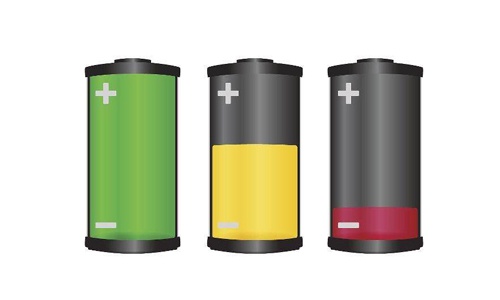Everything You Need to Know About the Shelf Life of Lithium Coin Batteries!
Nov 29, 2019 Pageview:3756
Lithium-ion powered batteries were first heard of in the early 1900s. When a scientist named G. W. Lewis started working on them. However, they were not introduced to the masses until the early 1970s. These batteries use lithium metal as an anode as the name suggests. Their main redeeming quality is their high-density charge. They can produce voltages anywhere from 1.5V to almost 3.7V. This high voltage range sets them apart from the other batteries available. They are also known for their long life. But all these qualities come with one small downside of higher cost per unit.
Many applications of modern lithium batteries exist today in the market. They are readily used for the produced ion of energy storage systems and automobiles. lithium batteries are also a common favorite to be used in medical devices. And also portable devices such as PDAs, blood pressure/ diabetes meters and many other portable devices. These batteries are higher in cost than the readily available alkaline batteries. But they provide a much longer life span, which attracts the user.
One of the main advantages of using Lithium batteries is that it can house electrical energy equal to almost three or four alkaline batteries. Yet it is still smaller in size than them and is portable. Giving it an edge over the other batteries.
The lithium battery also comes in small button size. The lithium button cell works on the same mechanism as the other lithium batteries do. They were also originally invented in the early 1970s to serve as a powerhouse of energy for watches. They were also widely used for low drain devices. So a button cell is a single cell contained in a small button like a battery that has the shape of a cylinder. It is usually sized anywhere between 5 to 25 mm diameter wise and 1 to 6 mm height-wise.
Like the other lithium batteries, they also have a lithium anode and a graphite anode. They are usually only 3 volts and are miniature. They have the signature high density of a lithium battery and an even longer shelf life. They are most popular due to their long life. They also have a vast variety of sizes and capacities.
Over the past few decades, electronics have found various uses of these batteries. They are small and compact but they are very powerful. Hence very popular to power watches.
However, due to them being extremely small in size one very important question arises. People often wonder about their shelf life. So here in this article, we will study the button cell and their shelf life.
How long do lithium coin batteries last?
Even though lithium batteries have a very long life. They still have a limited shelf life. Specially coin batteries. They are pretty small and compact. Usual coin batteries only have a limited shelf life of only two to three years. However, the lithium variety of coin batteries can last for a good ten years on the shelf.
This is also relative to the conditions that the battery is stored. Ten years of life are dependent on the temperature conditions that it is stored. The battery is good for ten years if it is stored on room temperature and in relative humid weather.
In the above-mentioned conditions, the batteries are going to disintegrate by 1% of their capacity. This is due to the ingress and egress of the vapors that enter or escape through the seal. The lithium coin batteries also develop a certain smell of DME. DME is 1, 2-Dimethoxy Ethane. The smell is apparent when the package is open after a few years. It is not a safety concern or a hazard. But it is noticeable.
Do lithium coin batteries expire?
Lithium ions battery does not as such have an expiry date. They are rechargeable so they last for around 300 cycles before dying out completely. They do disintegrate by a constant one percent even if they are on the shelf. So even if they do not expire or have an expiry date printed on them. They will die out after living their life. However, some lithium batteries can be reconditioned.
How do you expand the shelf life of lithium coin batteries?
Lithium coin batteries are generally more expensive than alkaline batteries. A pack of lithium coins is expensive but worth the money that you spent on it. However, if you don’t plan on using that battery pack right away, then you should consider prolonging their shelf life.
Here are a few things that you should take care of if you want to expand the shelf life of the batteries:
Lithium-ion coin batteries are designed in a way that works best if they are partially discharged. Taking the battery down to a complete zero will just shorten its lifespan. If you want your batteries to last longer then you should consider keeping it non zero. Discharge it down to 20 or 25 percent. Lithium-ion cells are not designed in a way that their chemistry keep would keep a track of the memory. So partial discharge will not harm the battery in any way. It is important to keep in mind that if the voltage of a lithium-ion cell is below a certain degree then the battery will be ruined.
Lithium-ion cells do die as such. But they do age and lose their properties. They disintegrate by almost 1% every year. So do not store the battery for longer periods. Use them within a few years so that they can be used while they are still good.
One thing to keep in mind while buying a battery pack is to ensure that you are buying a new battery pack. Ensure that the battery pack that you are buying is not sitting on the shelf for a few years. Checking the manufacturing dates is essential.
Keep the batteries away from the heat to maximize their life.
- Prev Article: Lithium-ion Car Battery Pack Discussion
- Next Article: Lithium Ion Battery Disposal Environmental Impact
Leave Message
Hottest Categories
-
Hottest Industry News
-
Latest Industry News













